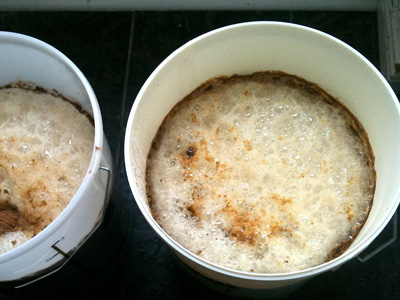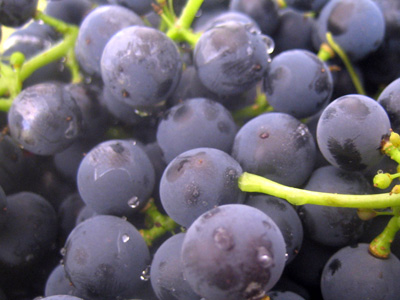Mold vs Yeast
You have seen it and probably smelled it too. Chances are, you are worried about it. Is it normal? Is it dangerous? Yes, we are talking about fungi—those growths that suddenly spring up on food, clothes, and the walls of your house.
Fungi are a normal (and healthy) part of nature. However, when present in high concentrations inside our homes and office environments, they can become problematic, putting our health and safety at risk.
Two of the most common types of fungus are yeasts (which can be found in nature but can also be cultured for industrial use) and molds (which can grow on clothes, walls, ceilings, and food items).
Because they share similar properties, yeasts and molds are often confused for one another. The article below is a good summary of the differences between yeast and mold. Being able to distinguish between the two is crucial to dealing with yeast and mold problems effectively.
Worried About Mold? Get a Free Inspection!
Mold can be a hidden hazard in your home, difficult to identify and dangerous to your health. Don’t let it go unchecked! Contact Mold Busters for a free virtual mold inspection. Our experts are ready to provide you with a comprehensive assessment and a plan to tackle any mold issue, ensuring your home is safe and healthy. Act now to protect your space!
Difference between yeast and mold


What is yeast?
- Yeast is a member of the fungus kingdom. The most common kind is biologically known as Saccharomyces cerevisiae.
- Yeast is distinguishable by its unicellular structure, though some varieties of yeast can have multicellular properties. Yeast is microscopic in size and a single oval yeast cell is considered an organism.
- Yeast grows by forming multiple new organisms from each single cell, so all yeast cells are identical to each other.
- Yeast requires an organic host to survive as it derives its nutrition from organic products.
What is mold?
- Mold is also a type of fungus. One of the most common and most dangerous species of mold found in homes is Stachybotrys chartarum.
- Mold is a complex multi-cellullar organism.
- Mold usually grows in colonies and is very similar in structure to other fungi. The mold organisms within colonies generally have the exact same cell structure, much like yeast. Each colony of mold is deemed a separate mold organism.
- Like yeast, mold needs organic matter from which to extract nutrition. Mold cannot survive on photosynthesis like plants do, hence its reliance on organic matter.
Yeast vs Mold: What do they look like?
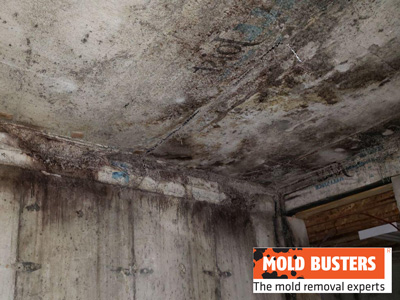
What does yeast look like?
Yeast is generally colourless but can also appear as a white or monochromatic thread-like substance. It feels smooth to the touch.
In initial wwws, yeast can be hard to distinguish from the organic matter it grows on because of its lack of colour.
What does mold look like?
Individual mold spores are microscopic in size and therefore invisible to the naked eye.
Fully formed mold colonies, on the other hand, may appear in a variety of colours, including orange, green, brown, pink, purple, but most often as white or black. It is fuzzy looking and feels furry to the touch.
Yeast vs Mold: Where do they grow?
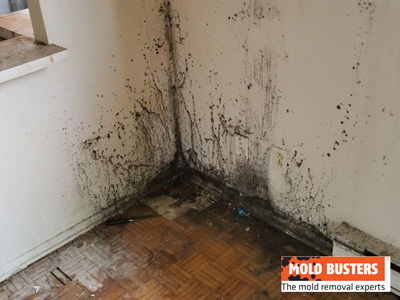
Where does yeast grow?
Yeasts are naturally occurring organisms that grow most prominently on plants, fruits, and in soil.
Yeast can also grow on the skin of animals and humans as well as in their intestinal tracts. It occurs naturally in female reproductive organs and may grow in the mouth and the throat under certain conditions.
Because yeast is attracted to sucrose-rich products, it can often be found growing on fruits and vegetables as part of the fermentation process. The fermentation process occurs when the fruit oxidizes after coming into contact with air, allowing for the growth of yeast.
Where does mold grow?
Molds also occur naturally but can only exist when the conditions are right. They grow on organic matter in the presence of moisture.
Mold spores are capable of becoming airborne, which allows the fungus to spread easily from food to clothes to furniture and structural components of your home.
If your home has had a moisture intrusion due to a plumbing leak, flood, or water damage caused by cracks in your walls or ceilings, it can become a favourable environment for mold growth.
Yeast vs Mold: How to identify them?
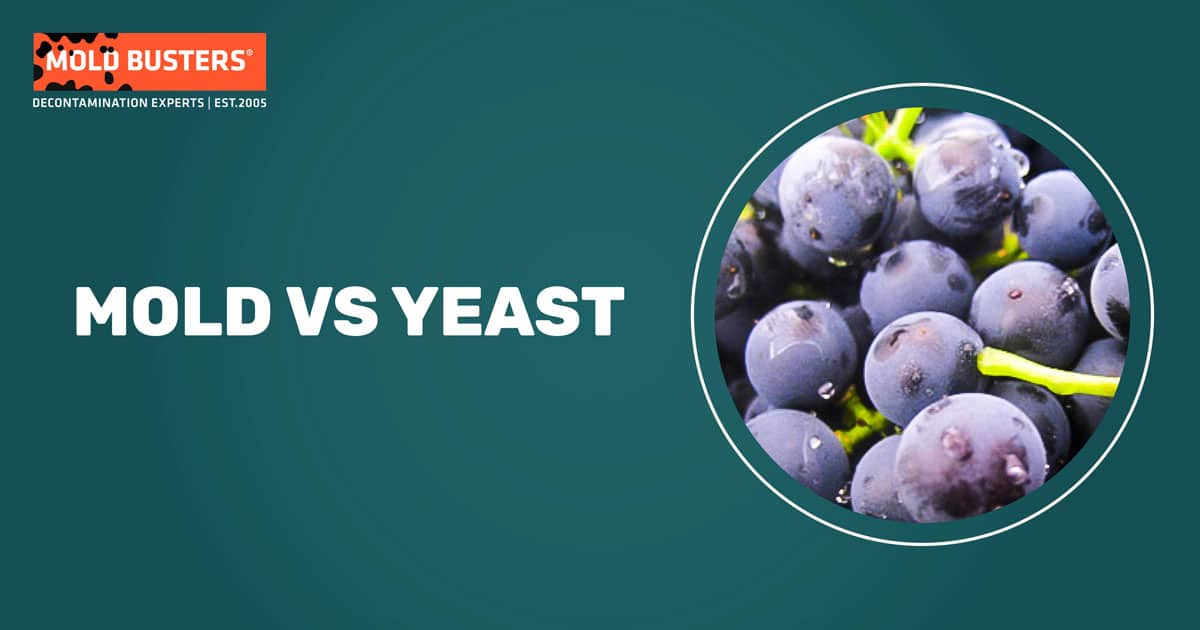
How to identify yeast?
A walk through a forest can reveal wild yeast growing on berries and fruits. However, as yeast is not considered a significant threat to indoor air quality, the need for yeast identification or testing is not great.
How to identify mold?
Identification of mold in indoor environments is important due to the toxic nature of many species of mold.
One of the most distinguishable features of mold is its smell. Often described as musty, earthy or damp, mold is often associated with dark, damp basements.
Discoloration on walls, floors, ceilings and other surfaces is another indicator of mold problems. Black spots, as well as white or grey furry growths are typical for indoor molds. Mold can also appear as slimy pink or orange growths in your bathroom shower, tub or toilet.
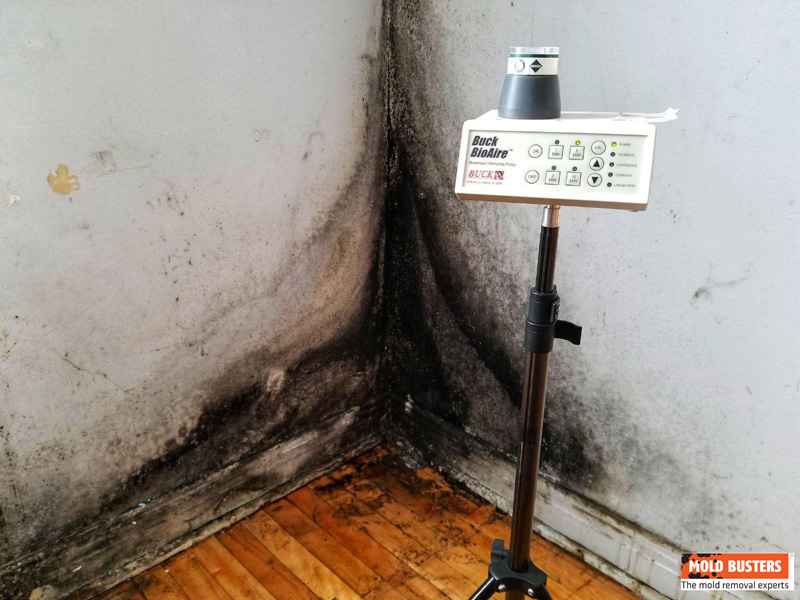
However, mold spores can be present in your home without any obvious signs. In fact, by the time a mold problem becomes visible to the naked eye, the contamination has already progressed to a much more serious level. This is why it is crucial to test your home air for mold after any moisture intrusion or leak. You can learn more about this on our mold inspection service page.

Did you know?
Only 12% of homes we tested didn’t have any presence of mold?! Find out more exciting mold stats and facts inside our mold statistics page.
Yeast vs Mold: Do they have any benefits?
Benefits of yeast
Yeast is widely used in the food and beverage industry, and the kinds of yeast used for this sector have many beneficial properties.
Saccharomyces cerevisiae is the nutritional yeast used in brewing and baking, and is a core ingredient in making beer and bread.
Nutritional yeast is also good for human health. Because yeast is a dairy- and gluten-free organism, it can be used to make products allergen-free for those who have an intolerance to dairy and gluten.
Naturally occurring yeast that exists in animal and human bodies keeps the body healthy by balancing the many different kinds of bacteria that exist in the digestive system.
Benefits of mold
Mold that grows on dead vegetation and substances is good for the environment as it breaks down dead matter, allowing it to be reabsorbed into the earth.
Mold’s greatest benefit is in its uses in medicine. Mold is the reason we have penicillin, among other medications, which have transformed healthcare around the world.
Yeast vs Mold: What are the health concerns?
Health risks of yeast
The Candida albicans species of yeast occurs naturally and is generally good for balancing your health, but an overgrowth of this yeast in the human body can weaken your immune system if your body isn’t strong enough to fight it.
People can also be allergic to nutritional yeast, which can cause them to break out in hives.
Health risks of mold
Mold can be very harmful to human health. In addition to causing mild to severe allergies, it can also be pathogenic and even toxigenic.
Common reactions to mold exposure include symptoms such as rashes, itchiness, or full-blown swelling, diarrhea, and even mental confusion.
Mold can also lead to skin infections and can become life-threatening if it enters the lungs, kidneys, or other sensitive organs.
Toxigenic reactions to mold can lead to acute organ damage, hormone disorders, and even cancer. If you suspect mold in your home, consider our virtual inspection service.
Yeast vs Mold: What remedies are available?
How to treat yeast?
- Yeast infections in humans have to be treated with anti-fungal creams, tea tree oil, which also has anti-fungal properties, supplements, and yogurt (or other probiotics).
- Many doctors prescribe antibiotics for yeast infections, but these medicines usually destroy the good bacteria in the body, creating more room for the yeast to grow and overtake the body, thus weakening the immune system further.
- It is best to prevent yeast growth by ensuring that areas where yeast grows are kept clean and dry.
How to treat mold?
- There are a few home remedies that you can try to undertake in an effort to remove mold that is growing in your home.
- You can try a combination of baking soda and vinegar to clean mold on clothes, or small, surface contaminations of non-porous materials. However, trying to remove larger mold contaminations from your home yourself is not advisable as you could end up making the situation worse, or exposing yourself to toxic mold.
- If you suspect your home may have a mold problem, you should consult experts who will be best able to identify the problem and find solutions that will not just remove the mold as it is occurring now, but prevent it from recurring.
Conclusion
Don’t rely on your instincts to find out whether or not your home has a mold problem. The moment you suspect there may be mold growing in your home, get a professional mold inspection team to assess the contamination and proceed with mold removal as quickly as possible.
The certified mold experts at Mold Busters are here to help with all your mold testing, mold removal and mold prevention needs. Contact us today. Whether you’re in Montreal or Ottawa, we’re ready to assist you.
Resources
- Introduction to Mycology – National Center for Biotechnology Information
- Yeast – Britannica

Get Special Gift: Industry-Standard Mold Removal Guidelines
Download the industry-standard guidelines that Mold Busters use in their own mold removal services, including news, tips and special offers:
Published: May 18, 2020 Updated: July 2, 2024

Written by:
John Ward
Account Executive
Mold Busters
Fact checked by:
Michael Golubev
CEO
Mold Busters

